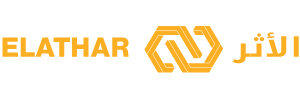What if your company could boost retention, outperform competitors, and unlock new market growth—just by embracing a stronger culture? Research shows businesses with robust DEIB (Diversity, Equity, Inclusion, Belonging) strategies achieve exactly that.
Great Place To Work found that inclusive workplaces retain employees 5.4 times longer than peers. Delta Airlines saw a 10% global market expansion after prioritizing these efforts. Yet, U.S. firms lose $1.7 trillion yearly due to weak inclusion practices.
This article explores actionable steps—beyond surface-level fixes—to build lasting success. Learn from real-world examples like Reaktor’s neurodiversity Slack channels and data-backed methods to transform your workplace.
Key Takeaways
- Inclusive companies retain talent 5.4x longer.
- DEIB initiatives can drive measurable market growth.
- Poor inclusion costs U.S. businesses $1.7 trillion annually.
- Effective strategies go beyond token gestures.
- Real-world examples provide practical blueprints.
Defining Diversity and Inclusion in the Workplace
Modern workplaces thrive when they move beyond headcounts to create environments where every voice matters. While these terms are often used together, they represent distinct concepts that drive organizational success.

What Is Diversity?
Diversity measures representation across genders, races, ages, and identities. It’s the visible mix of people in teams, but numbers alone don’t ensure equity. For example, a company might have 50% women in entry roles but zero in leadership—a gap signaling deeper issues.
What Is Inclusion?
Inclusion focuses on valuing contributions equally at all levels. Achievers’ Workforce Institute notes it’s about creating safety for authenticity. Harness.io found 76% of job seekers prioritize employers who demonstrate this through actions, not just policies.
Key Differences Between Diversity and Inclusion
Tokenism—like clustering employees of color in one department—shows the divide. Diversity counts who’s hired; inclusion ensures they influence decisions. Reaktor’s storytelling sessions exposed unconscious bias in promotions, proving metrics alone fail without cultural change.
A robust approach uses four pillars: Community (belonging), Growth (career equity), Education (bias training), and Engagement (feedback loops). Together, they turn static numbers into dynamic progress.
Why Diversity and Inclusion Matter for Modern Organizations
The business case for workplace equity is undeniable, with data proving its impact on innovation and revenue. Organizations that embed these principles into their culture don’t just foster fairness—they gain measurable advantages over competitors.
Business Benefits: Revenue, Innovation, and Retention
Racially diverse teams are 35% more likely to outperform peers, according to McKinsey. Siemens USA saw an 18% surge in innovation after empowering employee resource groups (ERGs).
HubSpot’s anonymous feedback system reduced maternal bias-related attrition by 32%, proving that inclusion drives retention. With turnover costing $15k per employee, Deloitte found diverse teams solve problems 65% faster—translating to bottom-line results.
The Human Impact: Trust, Belonging, and Engagement
Psychological safety boosts work enthusiasm by 9.8x, notes Great Place To Work. Vanguard’s “For All” culture—prioritizing equity in promotions—increased advancement rates by 40%.
When employees feel valued, trust flourishes. Achievers reports 71% of DEIB-mature companies outpace competitors, not just in profits but in talent loyalty and societal impact.
Common Challenges in Achieving Workplace Diversity and Inclusion
Many organizations struggle to move beyond surface-level commitments when building equitable workplaces. Despite increased awareness, 60% of companies lack clear racial representation goals, per HBR. Real progress demands confronting systemic gaps—not just hiring diverse talent but ensuring they thrive.
Tokenism vs. Genuine Inclusion
Diversity theater—like hiring underrepresented groups without addressing culture—backfires. Glassdoor data reveals 30% of diverse hires leave within two years when inclusion efforts stop at recruitment. Reaktor’s solution? Quarterly audits tying executive bonuses to retention metrics.
Performative allyship, such as one-time training, pales next to actions like Salesforce’s pay equity adjustments. Girls in Tech reports 68% of female leaders alter their behavior (“man mode”) to fit in, signaling deeper cultural flaws.
Leadership Gaps and Accountability
HBR found 72% of DEIB budgets go unspent due to leadership inaction. Without C-suite commitment, policies become empty promises. Accountability is key: Reaktor’s bonus-linked audits drove a 40% drop in attrition for underrepresented groups.
Only 25% of employees are asked for feedback on inclusion efforts (Achievers 2024). Leaders must actively solicit input and act on it—not just during annual surveys.
Measuring Progress Effectively
Vague goals like “improve inclusion” fail. Tech firms see 35% attrition among underrepresented employees within 18 months (Evolution). Solutions include:
- Transparent metrics: Track promotion rates by gender and race.
- Real-time feedback: Pulse surveys over annual reviews.
- Third-party audits: Avoid internal bias in data reporting.
Data alone isn’t enough—tying it to action, like Salesforce’s pay adjustments, closes the gap between intent and impact.
Leadership Accountability: The Cornerstone of D&I Success
True organizational change begins at the top—when leaders actively drive equity initiatives rather than delegate them. Only 28% of companies hold executives accountable for DEIB goals (HBR), yet those that do see 47% faster progress (Culture Amp).
Why Executives Must Champion D&I
HubSpot mandates 360° DEIB reviews for VPs, tying promotions to inclusive leadership metrics. Meanwhile, Fortune 500 data reveals a stark gap: women hold 52% of entry-level roles but just 8% of CEO positions.
Boeing’s $200M discrimination settlement underscores the cost of “checklist DEIB.” Lasting change requires embedding equity into daily operations, like Siemens USA’s board-reviewed monthly dashboards.
Setting Measurable Goals and KPIs
Vague pledges like “improve culture” fail. Effective strategies target specifics:
30% diverse leadership by 2026 or 90% ERG participation rates.
Delta Airlines links executive bonuses to retention metrics, proving accountability drives results. Without measurable targets, efforts remain performative—not transformative.
Building Inclusive Hiring Practices
Hiring practices shape more than just teams—they define an organization’s future potential. Companies like IBM and Unilever prove that equitable recruitment drives innovation while mitigating costly turnover.
Reducing Bias in Recruitment
Gender-neutral job postings attract 42% more applicants, per LinkedIn. Tools like Textio’s AI replace biased terms (e.g., “rockstar developer”) with inclusive language, broadening talent pools.
Unilever’s blind screening process—removing names and photos—boosted minority hires by 29%. This counters unconscious bias, ensuring skills trump demographics.
Diversifying Interview Panels
Harvard Business School found diverse panels cut biased decisions by 67%. IBM’s 2025 goal mandates 50% diverse interviewers globally, ensuring varied perspectives in evaluations.
Avoid “culture fit” traps—Wework’s pre-IPO homogeneity showcased its risks. Instead, assess skills, traits, and results (STAR framework) to align hires with values, not stereotypes.
Creating Equitable Job Descriptions
Listings should emphasize growth opportunity, not rigid requirements. Salesforce’s “trailblazer” ethos highlights learning potential, attracting non-traditional candidates.
Embed inclusion into employer branding. Glassdoor shows 76% of job seekers prioritize companies that demonstrate equity in action, not just policy.
Empowering Employee Resource Groups (ERGs)
When given real support, ERGs become powerful engines for cultural change and business growth. These groups amplify underrepresented voices while driving tangible outcomes—from hiring to innovation.
The Role of ERGs in Fostering Belonging
Microsoft’s Autism Hiring ERG increased neurodiverse hires by 300% through tailored recruitment programs. ERGs with budgets report 2.3x higher member satisfaction (McKinsey), proving investment fuels impact.
Procter & Gamble’s reverse mentoring program pairs junior ERG members with execs. This bridges generational gaps while shaping policies from diverse perspectives.
Best Practices for Supporting ERGs
EY pays ERG leaders for their time, countering the “free labor” trap. HBR found 68% of ERG leaders feel under-resourced—allocating 5-7% of L&D budgets fixes this.
Adopt the ERG Maturity Model: Transition from social clubs to strategy partners. Track metrics like promotion rates for ERG participants to measure real progress.
Creating Psychological Safety at Work
Fearless idea-sharing separates high-performing teams from stagnant ones. Google’s Project Aristotle found teams with psychological safety show 76% higher engagement. Yet, 43% of managers avoid tough conversations about bias, leaving employees unsure if their voices matter.
Encouraging Open Dialogue and Feedback
Salesforce’s “Vulnerability Index” measures safety levels through anonymous surveys. Questions like, “Do you feel safe admitting mistakes?” track progress. Adobe replaced forced rankings with “Check-In” growth dialogues, boosting honest feedback by 40%.
Bridgewater’s radical transparency model records all meetings. This reduced bias incidents by 58% as employees knew their concerns would surface. Avoid toxic positivity—Better.com’s mass layoffs during a Zoom call showed how forced optimism destroys trust.
Training Managers to Lead Inclusively
Teach scripts like, “How might your background influence this view?” to prompt reflection. Achievers found managers who practice active listening see 3x higher team innovation.
Role-play scenarios help leaders navigate tough talks. For example, responding to microaggressions with, “Let’s explore why that comment landed poorly.” Regular training ensures skills stick beyond one-time workshops.
Measuring and Sustaining D&I Efforts
Sustainable change requires more than good intentions—it demands measurable action. Companies tracking intersectionality progress 2.1 times faster (Gartner) prove data transforms promises into results. Yet only 12% of DEIB leaders have adequate resources (Time).
Key Metrics to Track
The DEIB Balance Scorecard monitors 12 indicators like sponsorship parity and promotion equity. Cisco’s “Inclusion NPS” methodology pinpoints gaps by asking: “Would you recommend this team to someone like you?”
Top performers allocate 3.2% of revenue to DEIB tech. This funds tools like real-time dashboards tracking retention by demographic—a strategy that helped Nielsen reduce bias reports by 41%.
Using Surveys and Data to Drive Action
Traditional surveys often miss hidden issues. Evolution found 82% of exit interviews overlook real DEIB concerns. Instead, adopt pulse surveys with questions like, “Have you altered your behavior to fit in?”
Nielsen’s sentiment analysis spots trends early. One client saw a 30% drop in attrition after addressing feedback within 48 hours. Remember: metrics matter only if tied to action, like adjusting policies or reallocating budgets.
Conclusion: The Path Forward for Inclusive Workplaces
Building a thriving culture requires consistent action, not just intentions. Start with Great Place To Work’s 90-Day Sprint—audit policies, fund ERGs, and train leaders. Avoid initiative fatigue by setting clear milestones, like GM’s three-year roadmap.
Future success hinges on transparency. Expect mandatory DEIB disclosures in SEC filings by 2025. Siemens USA’s 22% revenue growth proves equity drives business results.
Leaders must prioritize psychological safety and measure progress. Employees thrive when their voices shape decisions. The time to act is now—small steps today create lasting impact tomorrow.
FAQ
What is the difference between diversity and inclusion?
Diversity refers to the mix of people from different backgrounds, identities, and experiences. Inclusion ensures everyone feels valued and empowered to contribute fully. Representation alone isn’t enough—belonging matters.
How can companies reduce bias in hiring?
Use structured interviews, anonymized resumes, and diverse hiring panels. Train recruiters on unconscious bias and set clear equity goals to attract a wider talent pool.
Why are Employee Resource Groups (ERGs) important?
ERGs provide safe spaces for underrepresented groups, foster mentorship, and give leadership insights into workforce needs. They amplify voices and drive cultural change from within.
What metrics help track D&I progress?
Measure representation at all levels, promotion rates by demographic, engagement survey scores, and retention. Compare data over time to spot gaps and adjust strategies.
How can leaders champion inclusion effectively?
Set public goals, tie D&I to performance reviews, and allocate budgets for training. Listen to employee feedback and model inclusive behaviors daily—accountability starts at the top.
What’s the biggest barrier to workplace inclusion?
Tokenism—hiring for optics without addressing systemic inequities. Real change requires policy shifts, ongoing education, and empowering all employees to challenge biases.








